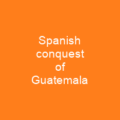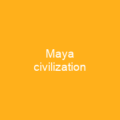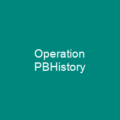Guatemala: A Country of Rich History and Diverse Challenges
Imagine a land where ancient civilizations once thrived, only to be overshadowed by the Spanish conquest and then plunged into decades of civil strife. Welcome to Guatemala, a country that has seen it all – from the grandeur of the Maya civilization to the turmoil of modern times.
The Ancient Roots
Guatemala is home to one of the most fascinating ancient civilizations in Mesoamerica: the Maya. These people built magnificent cities and developed complex calendars, mathematics, and hieroglyphic writing. But by 900 AD, the Classic Maya civilization had collapsed due to a combination of droughts and famine. The Post-Classic period saw the rise of regional kingdoms like the Itza and Kowoj in Petén.
Colonial Times and Independence
The Spanish arrived in the 16th century, conquering the land and imposing their own culture. After centuries of colonial rule, Guatemala gained independence from Spain in 1821. The road to freedom was not smooth; the country experienced instability, civil strife, and authoritarian rule for many years.
The Civil War and Beyond
From 1960 to 1996, Guatemala endured a bloody civil war that left over 200,000 people dead. The peace accord signed in 1996 marked the end of this dark chapter but brought with it new challenges such as poverty, crime, and corruption.
Modern Guatemala
Today, Guatemala is a constitutional democratic republic with a multi-party system. Despite its rich cultural heritage and diverse ecosystems, the country faces significant social issues like poverty, income inequality, and food insecurity. The government has made strides in recent years to address these challenges, but much work remains.
Geography and Ecosystems
Guatemala is a land of contrasts, with its three major regions: the highlands, the Pacific coast, and Petén. These diverse landscapes support unique ecosystems and species, making Guatemala a biodiversity hotspot. The country’s rivers, such as the Polochic and Dulce, play crucial roles in sustaining life.
Political Landscape
The political landscape of modern Guatemala is marked by periods of stability and turmoil. From the presidency of Rafael Carrera to the current administration led by César Bernardo Arévalo de León, the country has seen its share of leaders who have either brought progress or faced significant challenges.
Economy and Trade
Guatemala’s economy is diverse but faces numerous obstacles. The service sector dominates GDP at 63%, followed by industry (23.8%) and agriculture (13.2%). Agriculture remains a vital part of the economy, with exports including fruits, vegetables, flowers, and textiles. Tourism has also become an important source of revenue.
Demographics
The population of Guatemala is diverse, with over 56% identifying as Ladino (mixed indigenous and European heritage), while 43.6% are Indigenous Mayans. The country’s rich cultural tapestry includes a mix of ethnicities, languages, and religions.
Healthcare and Education
Guatemala faces significant health challenges, with high infant mortality rates and low life expectancies. Education is primarily publicly funded but has seen improvements in literacy rates over the years. The country’s healthcare system remains underfunded, with per-capita spending being relatively low.
Culture and Arts
Guatemala boasts a vibrant cultural scene, with notable writers like Miguel Ángel Asturias and Rigoberta Menchú winning prestigious awards. The country is also home to several acclaimed filmmakers and artists who reflect the nation’s rich history and diverse cultures.
A Future of Hope
Despite its challenges, Guatemala continues to evolve. Recent administrations have made efforts to address corruption, improve healthcare, and promote economic growth. With a young population and a growing middle class, there is hope for a brighter future ahead.

Guatemala’s journey from ancient civilizations to modern democracy is a testament to resilience and adaptability. As the country continues to navigate its complex challenges, it remains a land of rich history, diverse cultures, and endless potential.
You want to know more about Guatemala?
This page is based on the article Guatemala published in Wikipedia (retrieved on March 11, 2025) and was automatically summarized using artificial intelligence.







